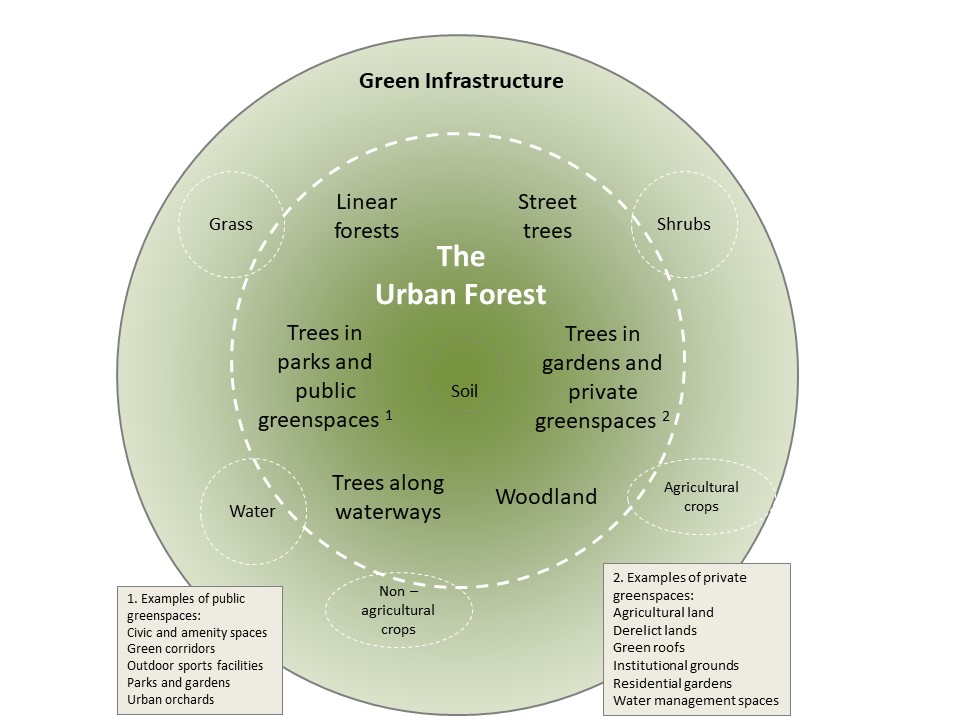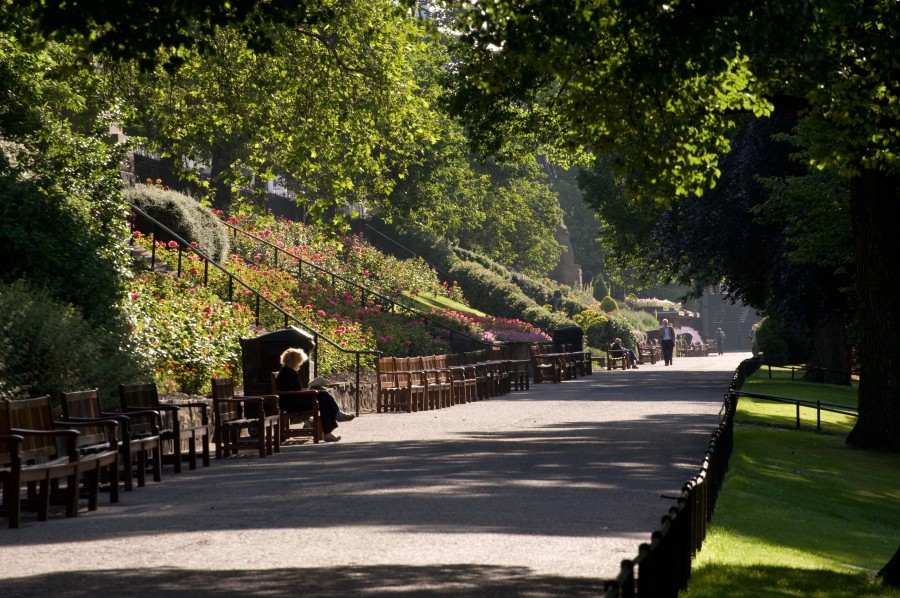Summary
The urban forest comprises all the trees in the urban realm – in public and private spaces, along linear routes and waterways and in amenity areas. It contributes to green infrastructure and the wider urban ecosystem. It provides numerous benefits to human society and it does so in vast quantities.
Maintaining a healthy and diverse urban forest is critical to sustaining resilient delivery of these benefits, and requires understanding of the urban forest resource, including: species and age composition, distribution, and health.

Research Objectives
Research to understand the urban forest focuses on:
Urban Forest Resilience
- Measuring canopy cover and the number of urban trees in UK towns and cities
- Investigating how urban forests grow, in terms of species performance, pest and disease risks, and longevity of urban trees
- Compiling and analysing individual tree data to research the species composition of urban forests
Sustainable Urban Forest Management
- Research to inform sustainable management decisions including urban forest policy, urban tree strategies, and tree ownership considerations
- Economic assessments using i-Tree Eco, CAVAT, and natural capital accounting to better understand the value of urban trees
Healthy Communities
- Improving understanding of and methods for quantifying a range of urban tree benefits linked to human health, including temperature regulation, noise and flood mitigation, air pollution removal, carbon storage and sequestration, and social and cultural values of urban trees
- Researching tree biometrics to inform improved ecosystem service estimation
- Building research capacity and expertise in the regeneration of Vacant and Derelict Land (VDL) to woodland and other greenspace uses, through the Centre of Excellence for Brownfield Regeneration
- Produce accessible and evidence-based guidance for practitioners to create and manage climate-resilient woodland greenspaces on vacant and derelict land

Latest Update
Urban tree canopy cover
Tree canopy cover has been measured in all urban areas in the UK. The area-weighted mean canopy cover was found to be 17.3%. The highest canopy cover, 80.4%, was found in a ward in the Epping Forest District, and the lowest, 0.0%, was found in central London.
Cooling by street trees
Street trees in Bristol have been found to cool the streets by several degrees during very hot weather. Analysis is ongoing, and this research will be developed to incorporate measurements of tree functions such as sap flow.
Novel tree species
The Novel Urban Tree Species Growth study began in 2018. Survey data for 41 tree species that have historically been underutilised in urban planting are being collected across five London boroughs. The aim of the project is to better understand the suitability of these ‘novel’ species for urban planting to inform future tree selection and help build resilient urban forests under our changing climate. Novel tree species in London continue to be monitored for their growth and vitality.
Regeneration Guidance for Tree Planting on Vacant and Derelict Land (VDL)
This work forms part of Defra’s ‘Discovery Phase 2’ project, which is supported by the Nature for Climate Fund (NCF). Forest Research will review and update existing VDL regeneration guidance, to reflect changes in policy legislation and practice; will lead the peer review of the Discovery Phase 2 outputs; and provide support to Defra and Forestry Commission VDL regeneration projects.
Climate-ready greenspaces
A successful sector engagement workshop was held in September 2023 which assisted in identifying the key climate-change-related risks to woodland creation and management on vacant and derelict land. Current work involves synthesizing existing evidence-based guidance for addressing the identified risks, followed by a research plan to address the guidance knowledge gaps.
